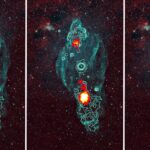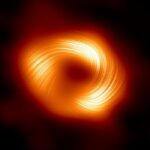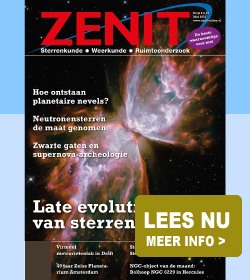Van tijd tot tijd publiceren we op dinsdag een interessante en vrij beschikbare astro-documentaire, afkomstig van bijvoorbeeld YouTube, DailyMotion, Vimeo etc. Vandaag:
Swallowed by a Black Hole
In deze documentaire wordt ingegaan om de duistere monsters van de kosmos: zwarte gaten. Wat gebeurt er precies als je in een zwart gat valt? Deze documentaire geeft je het antwoord op deze vraag en op vele andere vragen!
http://www.youtube.com/watch?feature=player_detailpage&v=b37taWNyGf0
Vorige edities:– Earth, Making of a Planet – Russia Meteor Impact 2013 – Fireball from Space – Do We Really Need the Moon? – Alien Planets and Eyeball Earths – Demistifying the Higgs Boson – Finding Life Beyond Earth – Journey to the Center of the Earth – Journey to the Edge of the Universe – Titan, a place like home





” Deze video is door de gebruiker verwijderd ”
En ik had me ontzettend op deze docu verheugd :-((
Hij doet het weer 😉
Jaaaaaaaa, bedankt Olaf!!
Zeer indrukwekkende documentaire. Is ons zwarte gat overigens nog aan het “voeden” momenteel?! Ik kan me herinneren dat ik er wel iets van gelezen heb dit jaar, maar ik weet het niet zeker. Weet iemand er iets meer van af, wellicht met een link…… 🙂
Op dit moment is ons zwarte gat aan het vasten. Er is echter een gaswolk op weg naar de kaken van het beest 🙂
Ja, precies. Dat had ik begrepen uit deze docu, vandaar dat ik me afvroeg of deze al aan het voeden was omdat er gesproken werd over 2013, althans dat was de verwachting. Bedankt nogmaals.
Was toch wel benieuwd geworden en ik ben gaan spitten in mijn NASA app. Ik vond hierover een artikel van een week geleden. Ik zal het hieronder eens neertikken;
“The Quiet Sagittarius A”
Hot gas is hard to swallow. At least that seems to be true for the supermassive black hole at the center of our Milky Way Galaxy. Known as source Sagittarius A*, the Milky Way’s black hole is centered in this infrared (red and yellow hues) and X-Ray (blue) composite (plaatje bij het artikel). Based on data from an extensive campaign of observations by the orbiting Chandra X-Ray telescope, the diffuse emission surrounding the black hole is seen in the close-up inset, the inset field spanning about 1/2 light-year across the galactic center some 26,000 light-years away. Astronomers have found that the X-Ray emission originates in hot gas drawn from the winds of massive young stars in the region. The Chandra data indicate that only about 1% or less of the gas within the black hole’s gravitational influence ever reaches the event horizon , losing enough heat and angular momentum to fall into the black hole, while the rest of the gas escapes in an outflow. The result explains why the Milky Way’s black hole is so quiet, much fainter than might be expected in energetic X-Rays. It likely holds for most supermassive black holes in galaxies in the nearby Universe.
(bron: NASA – Chandra X-Ray Observatory)
http://apod.nasa.gov/apod/ap130906.html (ik bedacht net dat Astronomy Picture of the Day dit ook behandeld heeft op 6 september jl. Had me een hoop tikwerk bespaart haha 😉 )
http://apod.nasa.gov/apod/image/1309/sgra_gasChandra.jpg